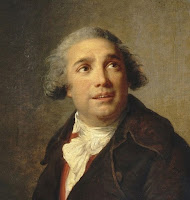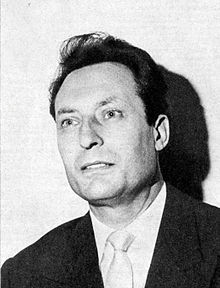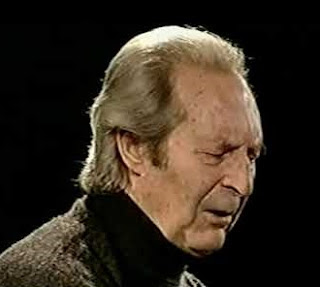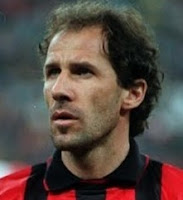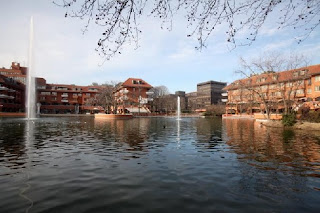Artist known for extravagant lifestyle
 |
| A 1923 painting by Filippo De Pisis entitled Still Life with a Bottle |
A close associate for a while of Giorgio de Chirico and Carlo Carrà, De Pisis is best known for his cityscapes, metaphysically-inspired maritime scenes, and still life pictures, especially depicting flowers. De Pisis, who was homosexual, also made many homoerotic sketches of the male nude. Later in life, he lived in Venice and became somewhat eccentric, travelling everywhere in his personal gondola.
Born into a noble family, as a boy he was known as Gigi. He was educated at home and was strongly influenced by his sister, Ernesta Tibertelli, who was a distinguished illustrator with libertarian views, and who probably introduced De Pisis to mystical writings.
De Pisis spent his childhood reading, drawing, collecting butterflies and wildflowers and writing poetry. He studied literature and philosophy at the University of Bologna, and published a volume of poems, Canti della Croara, in 1916. That same year, he met Carrà, De Chirico and his brother Alberto Savinio and and was attracted to metaphysical painting.
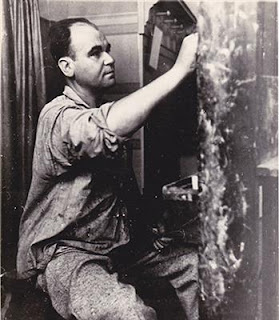 |
| De Pisis spent 14 of his most productive years as a painter living in Paris |
He had been criticised for the overly-sentimentality of some of his poetry, yet his emotional nature worked in his favour in his painting, which received early acclaim.
Seeking new adventures and subjects, in 1925 he moved to Paris, which would be his base for the next 14 years, with only brief interruptions. He met and became friends with Édouard Manet, Camille Corot, Henri Matisse and members of the avant-garde fauve movement.
After holding a personal exhibition, presented by Carrà, in the Lidel room in Milan, he returned to Paris and began an intense relationship with the painter Onofrio Martinelli, who he had met in Rome. They shared a house-studio in the Rue Bonaparte in the Saint-Germain-des-Prés quarter.
He became part of a group of artists known as the Italians in Paris, which included De Chirico, Savinio, Massimo Campigli, Mario Tozzi, Renato Paresce and Severo Pozzati. During his Parisian period he also visited London several times, forming friendships with the British painters Vanessa Bell and Duncan Grant.
 |
| De Pisis was probably best known for his cityscapes. This one, painted in Venice in 1942, is Rio della Torricella |
He moved again to Venice, where he was inspired by the paintings of Francesco Guardi and other Venetian masters of the 18th century, and began to live a rather extravagant lifestyle, travelling to and from his house on the Rio de San Sebastian canal in the Dorsoduro district by gondola. He maintained two gondoliers on 24-hour duty, who wore black-and-gold livery.
His health began to decline after the war and in 1948 he was treated in a clinic for neurological disorders in Bologna. From 1949 until his death in 1956 he lived mainly in a nursing home for sufferers from nervous diseases in Brugherio, a town north of Milan. As well as the collections in New York, Venice and Rome, there are a large number of his paintings at the Museo Filippo De Pisis in his home city of Ferrara.
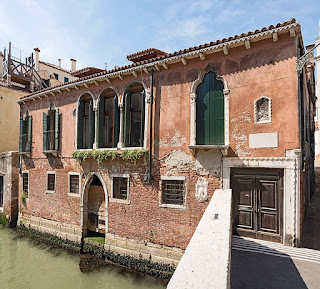 |
| After moving to Venice permanently in 1943, De Pisis lived in a house on Rio de San Sebastian in Dorsoduro |
Dorsoduro, where De Pisis lived after leaving Milan in 1943, is one of the six sestieri - municipal areas - of Venice, and sits between the Grand Canal and the Giudecca Canal. It is regarded as a good place to get a feel for the more traditional Venice, without the huge crowds and tourist trappings associated with the areas around St Mark's and the Rialto. There are many traditional bacari, the small bars that sell inexpensive small snacks - cicchetti - along with glasses of wine - known locally as ombre, as well as squares where local people meet during the day and students gather at night. It is also home to some fine churches, such as San Sebastiano, close to Casa De Pisis, which is full of works by Veronese. Nearby are two of the city's most prestigious galleries, the Accademia and the Peggy Guggenheim.
| The Villa Fiorita in Brugherio used to house the nursing home where De Pisis was cared for in his later years |
The nursing home in which De Pisis spent the last few years of his life was housed in the Villa Fiorita, an historic aristocratic urban mansion in Brugherio that was built in 1721 for the Scotti family. After being bought and sold a number of times, it was given over for use as a nursing home in 1938. De Pisis spent much of his time in the mansion’s vast greenhouse, which is situated in its large landscape gardens, which he chose because of its optimal exposure to sunlight and relaxing parkland setting. The mansion now houses Brugherio’s municipal offices. The greenhouse has been renamed Serra De Pisis.
More reading:
Giorgio de Chirico, founder of the scuola metafisica movement
How Carlo Carrà captured violence and speed on canvas
Vittorio Miele, the artist of the metaphysical school who lost his family in World War II battle
Also on this day:
1715: The birth of opera composer Ignazio Fiorillo
1817: The birth of ballet star Fanny Cerrito
1932: The birth of fashion icon Valentino
Home





